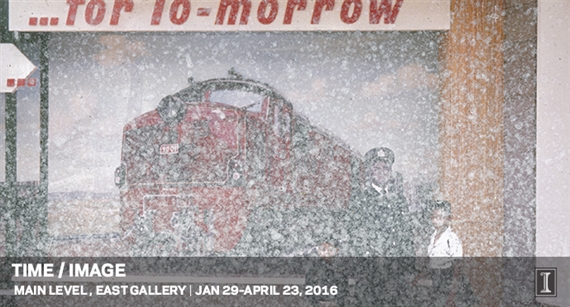Time / Image
Time / Image explores the interrelationship of time and thought in contemporary art. The exhibition borrows its title and, loosely, its philosophical framework from French philosopher Gilles Deleuze (1925тАУ1995), who developed the concept of the тАЬtime-imageтАЭ to describe what he felt to be a profound change in the perception of time brought about by post-World War II cinema. Through formal techniques such as cutting, montage, and repetition, cinema restated time as a tangible and active force with the potential to reach beyond the movie theater and into audiencesтАЩ experiences of the world at large.
The eleven artists selected for this exhibition understand time as an expansive dimension for interrogating the chronologies that govern how we live, for revisiting historical narratives and inherited genealogies, and for proposing futures yet to exist.
These artists strive for such ambitious aims, in part, through careful attention to form. They each seek out and develop temporal strategies of representation, whether in cinematic images that revive ghostly residues, in creative uses of juxtaposition that posit trans-historical and formal alignments, or in their acute attention to artistic mediums claiming to represent timeтАФcinema and video, but also photography, sculpture, and painting.

Recommended for you
Time / Image explores the interrelationship of time and thought in contemporary art. The exhibition borrows its title and, loosely, its philosophical framework from French philosopher Gilles Deleuze (1925тАУ1995), who developed the concept of the тАЬtime-imageтАЭ to describe what he felt to be a profound change in the perception of time brought about by post-World War II cinema. Through formal techniques such as cutting, montage, and repetition, cinema restated time as a tangible and active force with the potential to reach beyond the movie theater and into audiencesтАЩ experiences of the world at large.
The eleven artists selected for this exhibition understand time as an expansive dimension for interrogating the chronologies that govern how we live, for revisiting historical narratives and inherited genealogies, and for proposing futures yet to exist.
These artists strive for such ambitious aims, in part, through careful attention to form. They each seek out and develop temporal strategies of representation, whether in cinematic images that revive ghostly residues, in creative uses of juxtaposition that posit trans-historical and formal alignments, or in their acute attention to artistic mediums claiming to represent timeтАФcinema and video, but also photography, sculpture, and painting.
Contact details















